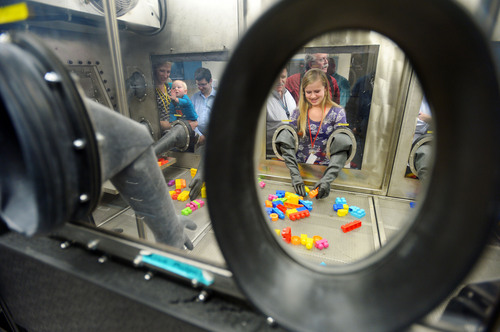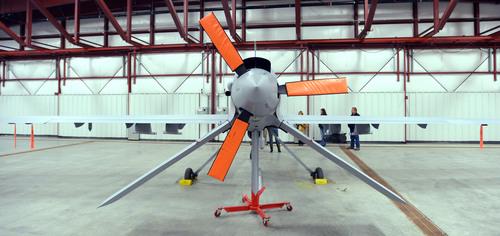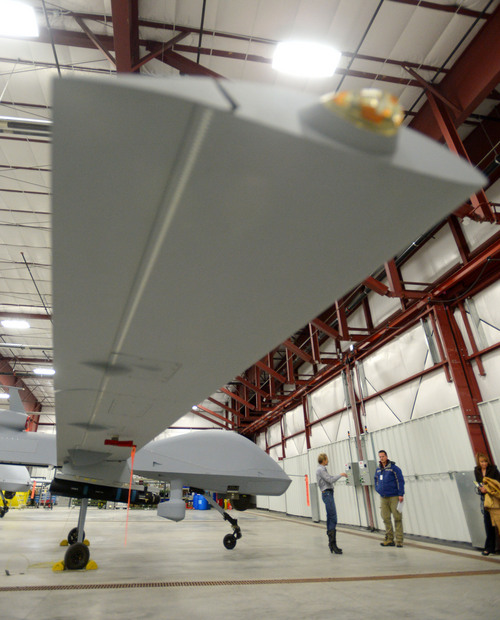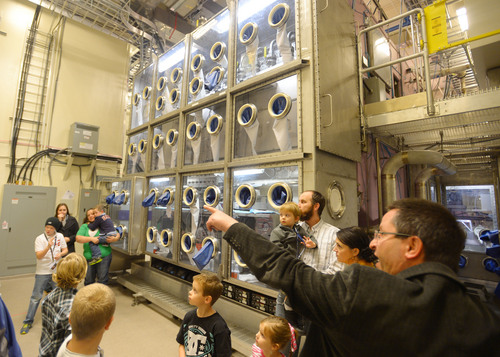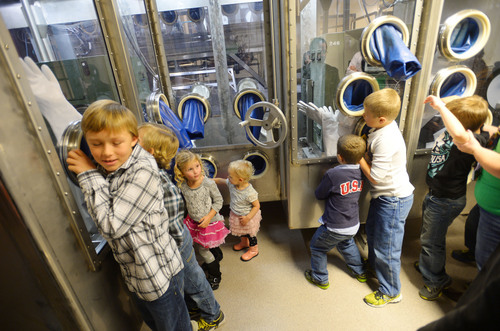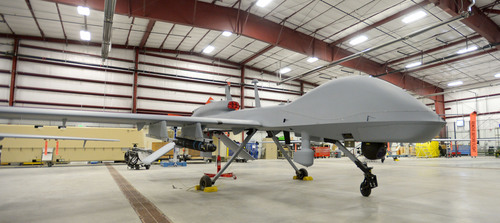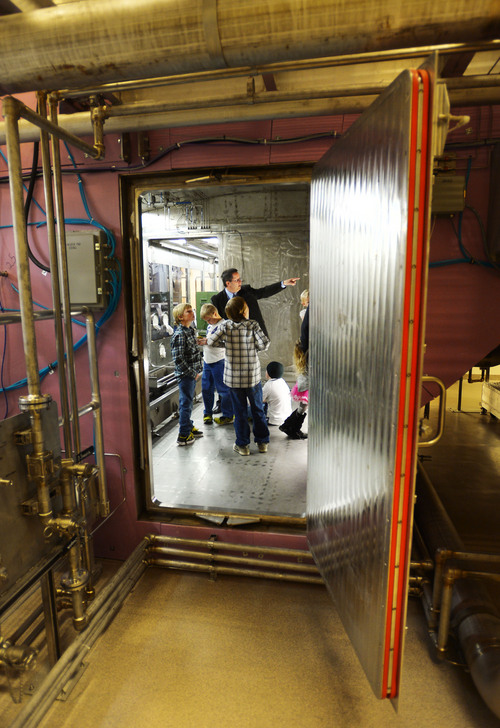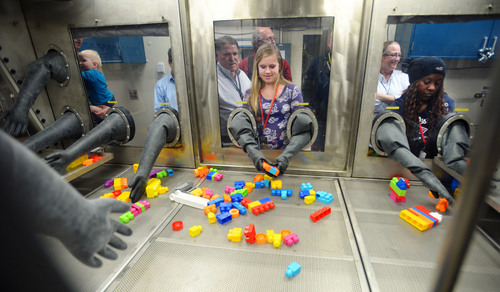This is an archived article that was published on sltrib.com in 2013, and information in the article may be outdated. It is provided only for personal research purposes and may not be reprinted.
Dugway Proving Ground • The container with rubber sleeves and gloves is for testing how U.S. Army equipment reacts to chemical weapons.
On Thursday, 14-year-old Tasha White slid her hands and arms inside the rubber and played with Legos.
For the first time in the installation's history, Dugway Proving Ground on Thursday gave tours to families.
White's father works in the laboratory where she played with the Legos.
"I thought he just tested bombs or something," she said.
Actually, bombs are tested in another section of Dugway. The Chemical Test Division finds ways to detect, prevent and defend against chemical weapon attacks. That often means testing with the same chemicals soldiers fear.
The division chief, Christopher Olson, spent much of his presentation to the families ensuring them their parent or spouse is safe at work. He showed the families detection devices around the division, discussed safety protocols and showed vials of counter-agents workers can inject into the back of their thighs if they do believe they were exposed to a deadly compound.
Olson said it was the first time many of the family members had heard about or seen their loved one's work.
"It's not classified, but we usually don't speak much of it," Olson said.
The families were only allowed to visit the division where their spouse or parent works. There were areas where they were told not to take photographs. Some gates and doors that are usually locked and guarded were left open, but Dugway police with rifles still patrolled outside.
Paula Thomas, a spokeswoman for Dugway, said the family day is a pilot project. Expanded tours and an open house for the public is under consideration.
Farther into Dugway's interior, families toured the buildings comprising the Life Sciences Division, where Army scientists test defenses against biological agents. Douglas Andersen, the division chief, showed elementary school children a chamber, the largest of its kind in the world, where he and staff will test how Army equipment reacts to biological agents. The chamber was recently constructed and is not yet operational.
"And it's only here in Utah," Andersen said.
"That's pretty cool," replied young Max Critchlow, whose father works in the division.
Twitter: natecarlisle


